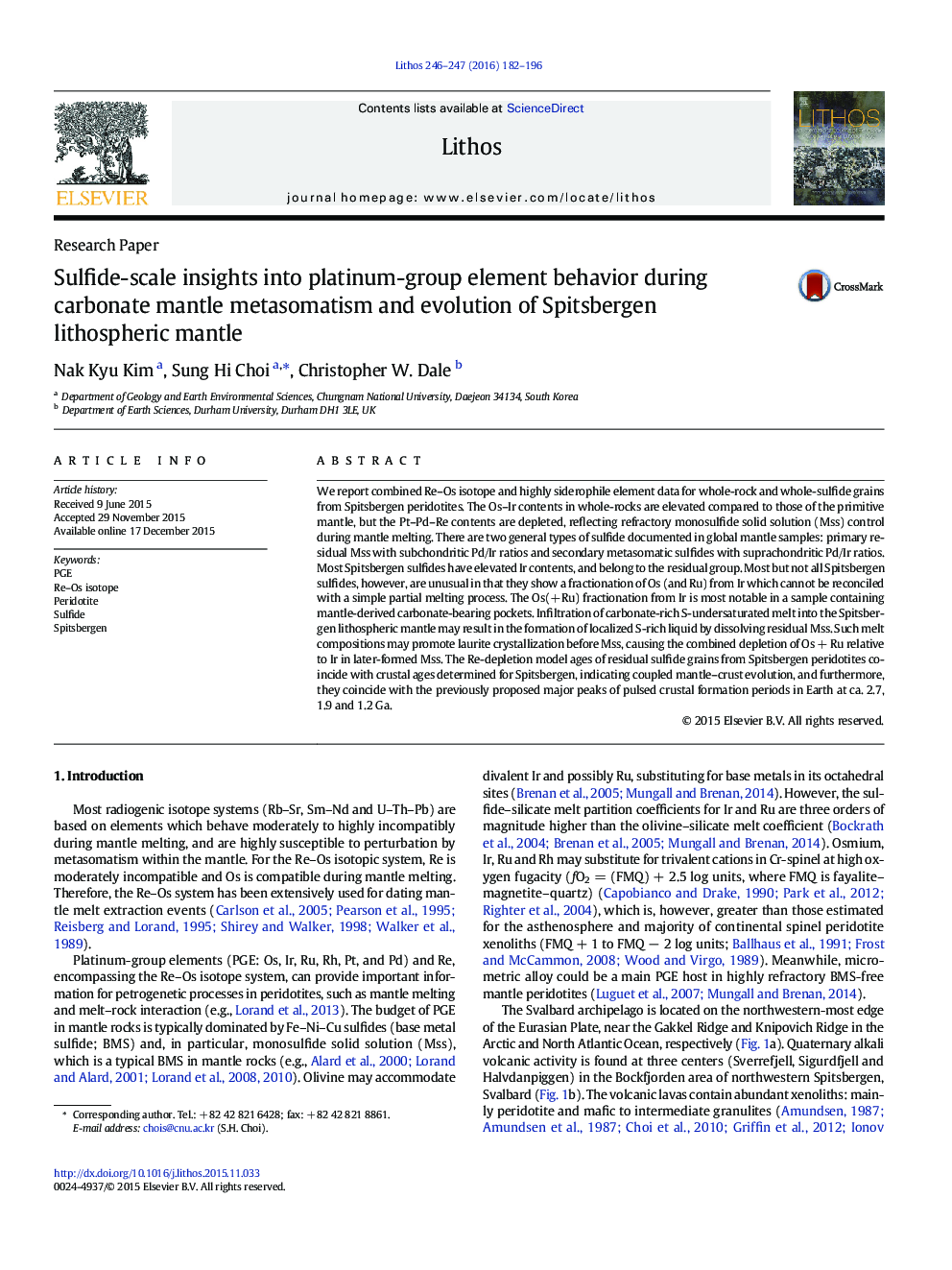| Article ID | Journal | Published Year | Pages | File Type |
|---|---|---|---|---|
| 6440602 | Lithos | 2016 | 15 Pages |
Abstract
We report combined Re-Os isotope and highly siderophile element data for whole-rock and whole-sulfide grains from Spitsbergen peridotites. The Os-Ir contents in whole-rocks are elevated compared to those of the primitive mantle, but the Pt-Pd-Re contents are depleted, reflecting refractory monosulfide solid solution (Mss) control during mantle melting. There are two general types of sulfide documented in global mantle samples: primary residual Mss with subchondritic Pd/Ir ratios and secondary metasomatic sulfides with suprachondritic Pd/Ir ratios. Most Spitsbergen sulfides have elevated Ir contents, and belong to the residual group. Most but not all Spitsbergen sulfides, however, are unusual in that they show a fractionation of Os (and Ru) from Ir which cannot be reconciled with a simple partial melting process. The Os(+ Ru) fractionation from Ir is most notable in a sample containing mantle-derived carbonate-bearing pockets. Infiltration of carbonate-rich S-undersaturated melt into the Spitsbergen lithospheric mantle may result in the formation of localized S-rich liquid by dissolving residual Mss. Such melt compositions may promote laurite crystallization before Mss, causing the combined depletion of Os + Ru relative to Ir in later-formed Mss. The Re-depletion model ages of residual sulfide grains from Spitsbergen peridotites coincide with crustal ages determined for Spitsbergen, indicating coupled mantle-crust evolution, and furthermore, they coincide with the previously proposed major peaks of pulsed crustal formation periods in Earth at ca. 2.7, 1.9 and 1.2 Ga.
Keywords
Related Topics
Physical Sciences and Engineering
Earth and Planetary Sciences
Geochemistry and Petrology
Authors
Nak Kyu Kim, Sung Hi Choi, Christopher W. Dale,
